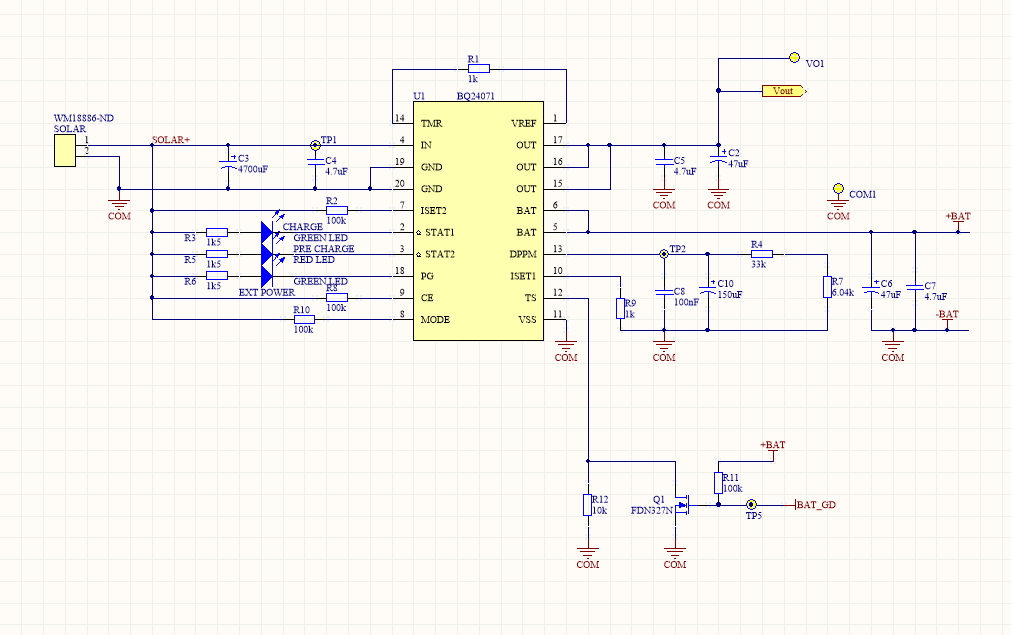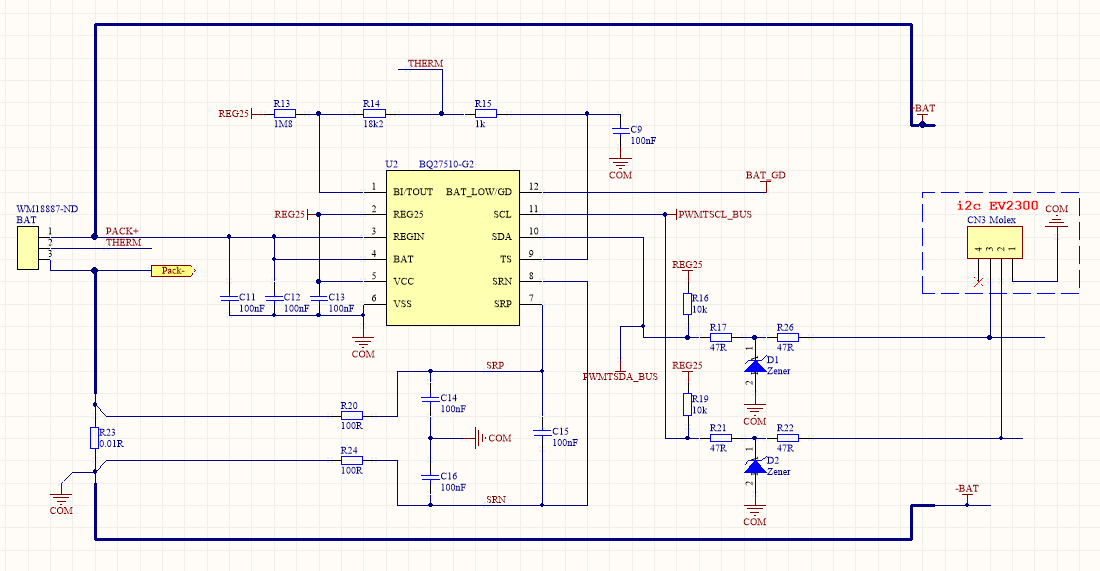Other Parts Discussed in Thread: BQ27510-G2,
Hi,
I have a device that charges a 3.7V Li-Ion battery using a BQ24071, with a BQ27510-G2 as fuel gauge. The device can/should be charged with either a 5V solar panel or an AC adapter. The diagrams used in the design are
Charger:
Fuel Gauge:
Note that the TS pin on the charged is connected to a pull up to the BAT_LOW/GD on the fuel gauge. That pin is configured to ouput BAT_GD in a low level, so, when the battery is not Ok the TS pin is shorted to ground.
Overall the charger works fine, but if for any reazon the battery gets completly discharged (to the point that the PCM kicks in), when the IN (solar panel/adapter) is restored, the battery wont start charging, unless its unplugged and plugged again.... and If the device is solar powered in the middle of nowhere, this is a time consuming problem.
What could be the problem?, is it fixeable using the current design?
Regards.



